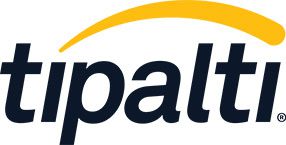
- onboarding suppliers
- raising purchase orders
- approving purchase orders
- receiving invoices (from suppliers)
- coding supplier invoices
- matching supplier invoices to purchase orders
- approving supplier invoices for payment
- scheduling payments
- approving payments
- executing payments
- reconciling
- reporting.
When working through this list, to establish what is manual, for most organisations the conclusion will be ‘a lot’. Indeed, Tipalti recently conducted a survey of 500 finance leaders in fast-growth businesses in the US and the UK. It exposed several negative characteristics and impacts which manual AP processes impose. For the obvious ones – like manual invoicing, PO matching and making payments – the research highlighted how these:
- hold back business growth
- constrain the ability to manage operations effectively
- affect both employee and customer satisfaction
- create cash flow issues
- open up risk opportunities, especially for fraud
- diminish the finance function’s reputation within the wider business.
In addition, perhaps the biggest risk is fraud – in effect, aided and abetted by multiple operations conducted by different people behaving inconsistently. The report indicated that >80% of finance leaders believe fraud and risk exposure are among the biggest of AP’s challenges.
OCR is not a total answer
One common action to try to address some of AP’s challenges has seen organisations introduce some element of automated AP invoice processing – through the use of OCR technology. OCR exploits software which can:
- scan incoming invoices across multiple languages and formats (email/paper/electronic)
- be trained to find the position of certain data points on an invoice through intelligent filters and searching for commonly used keywords in a given proximity
- convert data on these invoices into editable text to populate an electronic version of the invoice in a database, accounting or AP system.
One attraction, though possibly superficial, is that good OCR systems are relatively easy to implement. Self-learning (heuristic) capabilities mean OCR technology should improve its accuracy as more invoices are processed. As such, OCR is often a productive tool for extracting invoice data. But its capabilities are also limited.
While OCR has this attraction, it is, nevertheless, only a relatively small component of what is automatable. Furthermore, while OCR alone does have an impact, it can introduce errors, cash flow issues as well customer and employee dissatisfaction. In short, OCR alone is not a silver bullet.
Why OCR alone falls short
While it is indisputable that automating the ‘lifting’ of data from supplier invoices is better than manually keying in the data to an AP or accounting systems, the question is how much better. For an AP professional, the answer may be: not much.
For example, while OCR technology has some benefits, OCR is not 100% precise for AP purposes. Often manual work is still necessary, particularly to find and correct errors; if OCR has a 85%-90% accuracy – the commonly advertised rate of accuracy from OCR solution providers – this means that 10%-15% of the information ‘read’ will be inaccurate or missing – which means that if AP processes hundreds of invoices every month, that adds up to considerable manual correction work.
As stated earlier, one of the strengths of modern OCR technology is the ability to ‘learn’ and develop a specific approach to reading different types of invoices. Yet it is an unfortunate truism for AP that suppliers change their invoicing practices (and layouts). The types of invoices that a business receives are constantly changing. Change will always inhibit OCR accuracy no matter how good OCR heuristics are.
Finally, audit issues can raise a new set of problems. Without going through each invoice, neither auditors nor AP staff will know where uncaught errors are. This means reading through each invoice to double check every entry for accuracy. Restated, 85%-90% accuracy does save time but it by no means removes manual processing.
To automate, look beyond the tool to the whole of AP
For most CFOs/FDs today, AP contains perhaps the greatest number of manual and painful, processes. This suggests it is a prime target for automation, but only if any solution adopted takes a broad approach. The objective must be to solve pain points across the entire Accounts Payable function. In this context, invoice capture alone (OCR) is insufficient. Just as important are combining the many facets of AP, from onboarding suppliers to raising and approving purchase orders, to receiving and matching supplier invoices to purchase orders, to approving supplier invoices for payment, to executing payments as well as reconciling and reporting.
Only when businesses adopt a broad approach to AP will they benefit from AP automation. In this context, OCR is a tool which is at the same time narrow and overly specific to one part of the AP life-cycle. If CFOs/FDs want to release staff from tedious AP manual processes, they must understand the broad picture, including some key metrics:
- how many supplier invoices does AP receive each week (or month)?
- what percentage of AP transactions succeed (‘go straight through’ with no extra handling) and, conversely, what percentage fail?
- what are average transaction approval times (vital for constructive supplier relations)?
Equipped with such metrics, preferably on an evolving or trend basis, informed decisions about automating become practical. Indeed, one specific – and different metric – may be of relevance. If a business processes 100+ purchase invoices/month, then it is probably a prime candidate for AP automation.
To learn more about what automation exists for the finance function and how it can benefit your organisation, Tipalti has sponsored an Enterprise Times white paper, which is downloadable here.

Tipalti enables high-growth companies to scale quickly by making payables strategic with operational, compliance, and financial controls. Companies can efficiently and securely pay thousands of partners and vendors in 196 countries within minutes. Thousands of companies, such as Amazon Twitch, National Geographic, Business Insider, Hopin, Cazoo and Time Out use Tipalti to reduce operational workload by 80 percent and accelerate the financial close by 25 percent, while strengthening financial controls and spend visibility.

























